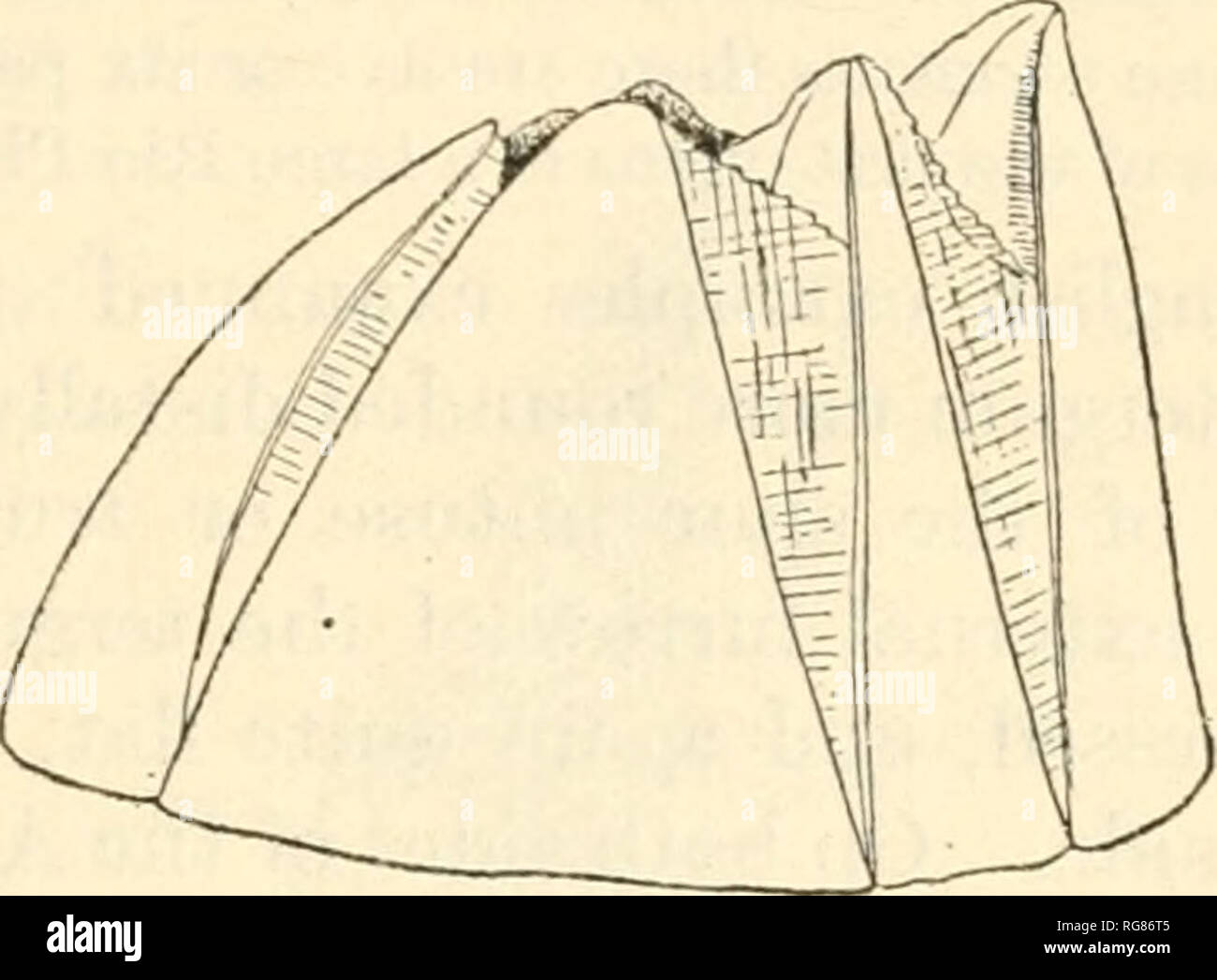. Bulletin - United States National Museum. Science. Fig. 16.—a, Balanus improvisus x 3, quinnepiac, mass.; 6, B. ebueneus x 2, ocean city, md., to ILLUSTRATE DIFFERENCE IN THE KADH. also of a rather brighter yellow. The largest specimens which I have seen are those from the Plata and those attached to a ship from the West Indies, and they had a basal diameter of 0.6 of an inch—from 0.4 to 0.5 of an inch is the more usual full aver- age size. Scuta, with the lines of growth but little prominent; articular ridge prominent but little reflexed; adductor ridge straiglit and very prominent, varying

Image details
Contributor:
Book Worm / Alamy Stock PhotoImage ID:
RG86T5File size:
7.1 MB (164.6 KB Compressed download)Releases:
Model - no | Property - noDo I need a release?Dimensions:
1842 x 1356 px | 31.2 x 23 cm | 12.3 x 9 inches | 150dpiMore information:
This image is a public domain image, which means either that copyright has expired in the image or the copyright holder has waived their copyright. Alamy charges you a fee for access to the high resolution copy of the image.
This image could have imperfections as it’s either historical or reportage.
. Bulletin - United States National Museum. Science. Fig. 16.—a, Balanus improvisus x 3, quinnepiac, mass.; 6, B. ebueneus x 2, ocean city, md., to ILLUSTRATE DIFFERENCE IN THE KADH. also of a rather brighter yellow. The largest specimens which I have seen are those from the Plata and those attached to a ship from the West Indies, and they had a basal diameter of 0.6 of an inch—from 0.4 to 0.5 of an inch is the more usual full aver- age size. Scuta, with the lines of growth but little prominent; articular ridge prominent but little reflexed; adductor ridge straiglit and very prominent, varying a little in its distance from the articular ridge; there is scarcely any depression for the lateral depressor muscle; the upper internal sm-face of the valve is roughened with ridges. Terga, v/ith a moderately deep longitudinal fmTow; spur short, rather narrow, with the end rounded, placed at less than its own width from the basiscutal angle; in the Rio Plata specimens the spur is close to this angle; the basal margin is gener- ally straight on opposite sides of the spur, but sometimes on the carinal side is a little hollowed out. The lines of growth are upturned along the carinal margin, which consequently is a little protuberant, but to a varying degree. The crests for the depressors are extremely distinct and prominent. In the varieties ha'ing the basi- carinal margin hollowed out, and the carinal margin protuberant, there is a marked resemblance to the peculiar tergum of B. ehurnexis. Walls: The parietal pores are tolerably large and are crossed by numerous trans- verse septa; the longitudinal septa are very finely denticulated at their bases, but occasionally almost smooth. The radii are, as stated, extremely narrow, and very remarkable from their smooth rounded edges; their septa are barely denticulated. The alae are remarkably protuberant; they have their summits much less oblique than those of the radii, and sometimes they are almost parallel to the basis; their 4